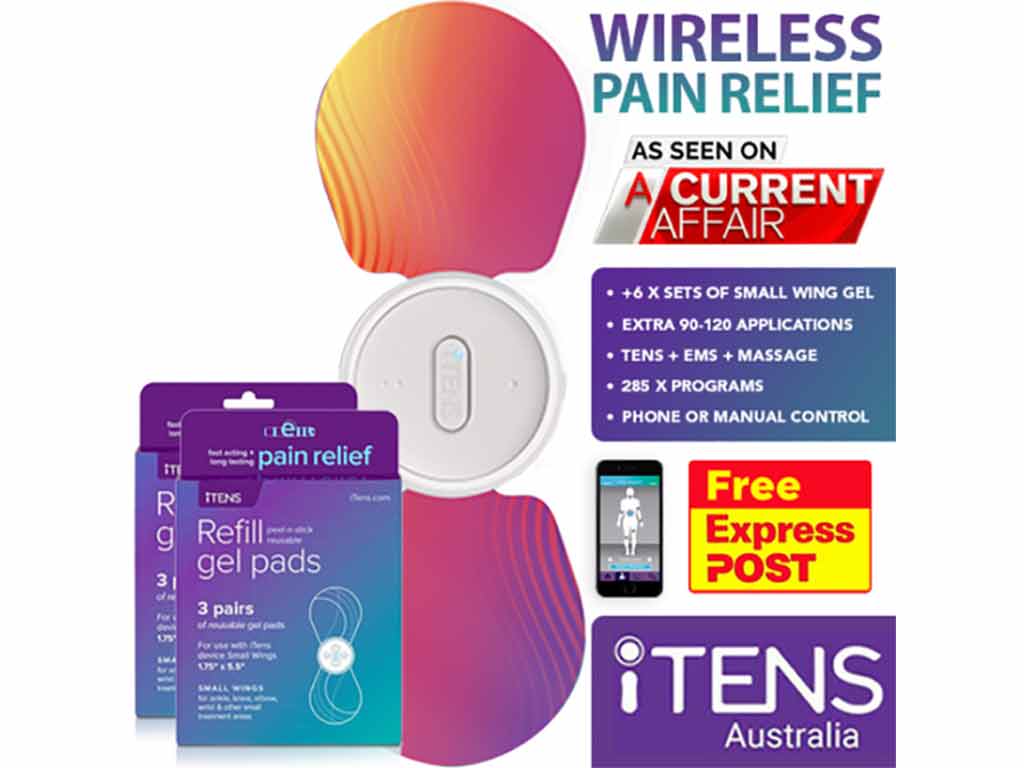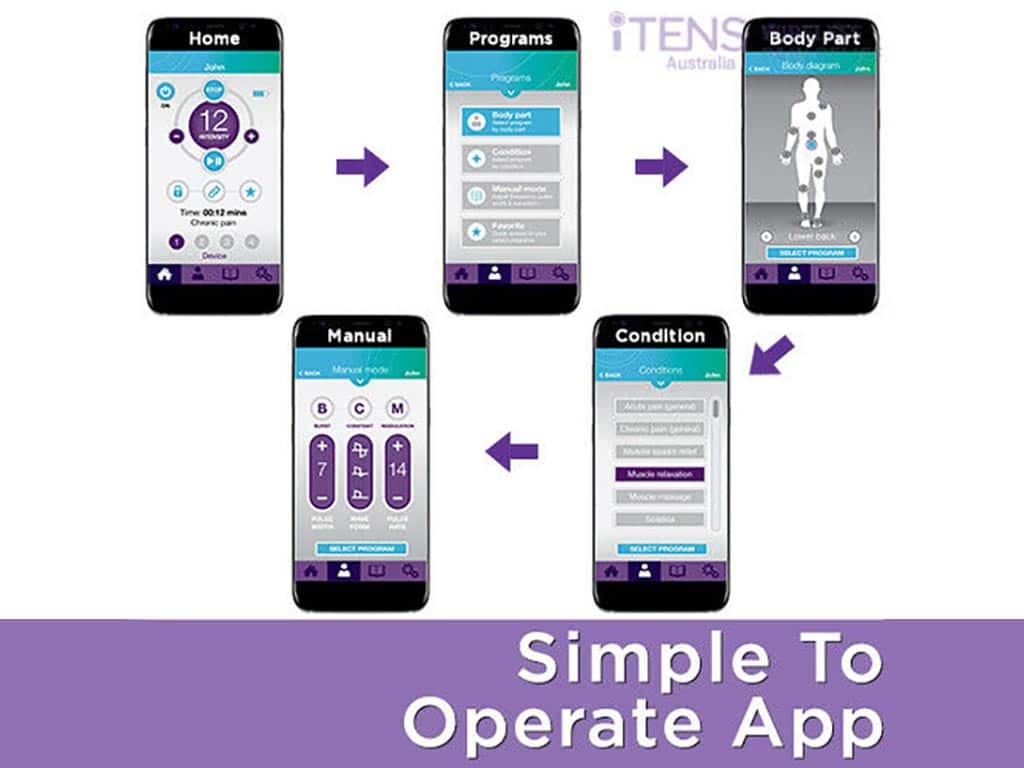
Transcutaneous Electrical Nerve Stimulation (TENS) is a therapy that uses a device to deliver electrical currents to the body as a method of pain relief. Consequently, this e-stim TENS unit works through several mechanisms. It interrupts the transmission of pain signals and triggers the release of endorphins. Furthermore, operating the e-stim device is a straightforward process. Begin by locating the treatment area and preparing the skin. Then, position electrodes. Finally, turn on the device and adjust the settings.
Living with different conditions can be debilitating. Hence, finding a safe and effective tool to alleviate it is essential for maintaining a good quality of life. Common solutions typically include physical therapy programs and medications. However, they may not always provide adequate relief. Fortunately, advancements in technology have led to the development of e-stim treatments, including TENS. This article will present TENS e-stim units, including how they work and how to operate them.
What is an E-Stim TENS Unit?
An e-stim TENS unit is a battery-operated device that uses electrical stimulation to relieve conditions. Accordingly, the delivery of electrical pulses is possible due to the adhesive electrodes placed on the skin. Healthcare providers, pain clinics, and physical therapists often utilise e-stim therapy as part of their treatment plans for patients. Also, individuals may use these devices in the comfort of their homes.
The e-stim equipment comes in both wired and wireless options. The wired units typically feature electrode pads that are connected to the central machine via lead cables. Meanwhile, wireless units operate without the need for physical wires. Nevertheless, individuals can control the therapy manually or with the use of a smartphone or tablet through Bluetooth technology.
Furthermore, the device offers a range of features. Common features include adjustable settings, program modes, and dual channels. Additionally, the electrodes come in different sizes and shapes. This is to cater to specific treatment areas. TENS may offer small, large, and long pads. Moreover, some electrodes have specialised shapes. This may be round, square, or rectangular.
Types of Pain Treated with TENS Therapy
- Chronic pain: This persists over an extended period. It often results from arthritis, fibromyalgia, shoulder, neck, and backaches.
- Acute pain: It is typically caused by injuries, postoperative conditions, tension headaches, menstrual cramps, and labour pain.
- Neuropathic pain: This stems from damage or dysfunction within the nervous system. TENS therapy is beneficial for managing sciatica, trigeminal neuralgia, post-herpetic, and occipital pain.
- Musculoskeletal pain: It affects the muscles, bones, ligaments, tendons, and nerves. It may arise from joint pain, rheumatoid arthritis, and osteoarthritis.
- Muscle discomforts: TENS units are effective in addressing muscle-related ailments. This may be muscle tension or spasms.

How Does an E-Stim TENS Unit Work?
The Pain Gate Theory is a fundamental concept behind the functioning of an e-stim TENS unit. According to this theory, the nervous system possesses a “gate” that regulates the transmission of pain signals. The electric currents from TENS can effectively close the “gate”. Hence, it prevents or reduces the transmission of pain signals to the brain. This phenomenon leads to a decrease in the perception of discomfort.
Another important aspect of TENS therapy is the release of endorphins. These are the natural pain-relieving chemicals of the body. The electrical pulses from TENS have been shown to trigger the production and release of endorphins. Endorphins act as natural painkillers, binding to specialised receptors in the brain and spinal cord. Nevertheless, this promotes a sense of well-being.
TENS treatment also has an impact on blood flow. The devices can cause vasodilation. This process can increase blood circulation. As a result, it promotes healing and the delivery of essential nutrients to the tissues. Additionally, TENS units offer the flexibility to deliver electrical stimulation at low and high frequencies. Low frequency operates below 10 Hz, while high frequency works above 50 Hz.
Advantages of Using TENS
TENS therapy provides a non-invasive method of pain management. It offers relief without the need for medications or more invasive procedures. Hence, it eliminates the potential side effects or risks of these treatments. Accordingly, TENS units allow for targeted pain relief. This approach enables individuals to focus the treatment on the area experiencing discomfort.
TENS devices provide customisable treatment options. It allows people to adjust the frequency, intensity, and duration of the electrical stimulation. Furthermore, TENS therapy can be integrated into a comprehensive pain management plan. This complements other treatment modalities. Finally, it has the potential for long-term use.

How to Operate an E-Stim TENS Unit
Operating an e-stim TENS unit involves several simple steps. Before using a TENS device, ensure that it is adequately charged or has fresh batteries. Then, identify the parts of the body experiencing discomfort. Clean and dry the skin over it before applying the electrode patches. Proper electrode placement is crucial in this step. Hence, follow the recommendations of the manufacturer or a health professional.
Avoid placing the electrodes on the head, eyes, mouth, throat, chest, and broken skin. Subsequently, power on the TENS device. The individual can start by adjusting the settings. This may include modifying the frequency, intensity, or duration. Also, some TENS units may extend pre-set programs. Thus, select the appropriate. Start with a low setting and gradually increase it to a comfortable level.
With the settings adjusted, initiate the electrical stimulation by pressing the appropriate buttons. Throughout the therapy, it is essential to closely monitor any sensations that may arise. The duration may last 15 to 30 minutes. Once the therapy is complete, power off the TENS device and remove the pads. After the operation, properly store the unit in a clean and safe place.
Key Components of a TENS Device
Firstly, the control unit. This serves as the central hub of the TENS device. It houses the control interface and display panel. Secondly, electrodes are pivotal components that facilitate the transmission of electrical stimulation from the TENS unit. Thirdly, the lead wires (for wired devices). It serves as the conductive pathways that link the control unit to the electrodes.
Additionally, the TENS device is powered by a rechargeable battery (usually for wireless) or disposable batteries. A reliable power source is essential for uninterrupted operation. Furthermore, some TENS units have protective casing. This safeguards the device from physical damage and environmental factors.
Conclusion
In conclusion, the e-stim TENS unit is a valuable tool for pain management. It is a wired or wireless device with various features. Also, it is commonly used by professionals, clinics, therapists, and individuals. Furthermore, TENS works by delivering electrical currents to the body. This electrical stimulation can block the transmission of pain signals, trigger the release of endorphins, and improve blood flow. Additionally, the electrical pulses can stream in low (below 10 Hz) and high (above 50 Hz) frequencies.
TENS can treat chronic and acute pain. This may also include neuropathic and musculoskeletal pain. There are numerous advantages to using a TENS device. It is non-invasive, customisable, provides targeted relief, and can complement other treatment modalities. Moreover, operating a TENS unit involves several simple steps. Begin by checking the device. Then, identify the treatment region and clean the skin over it. Next, power on the unit, adjust the settings or choose a program. Finally, initiate the electrical stimulation.







